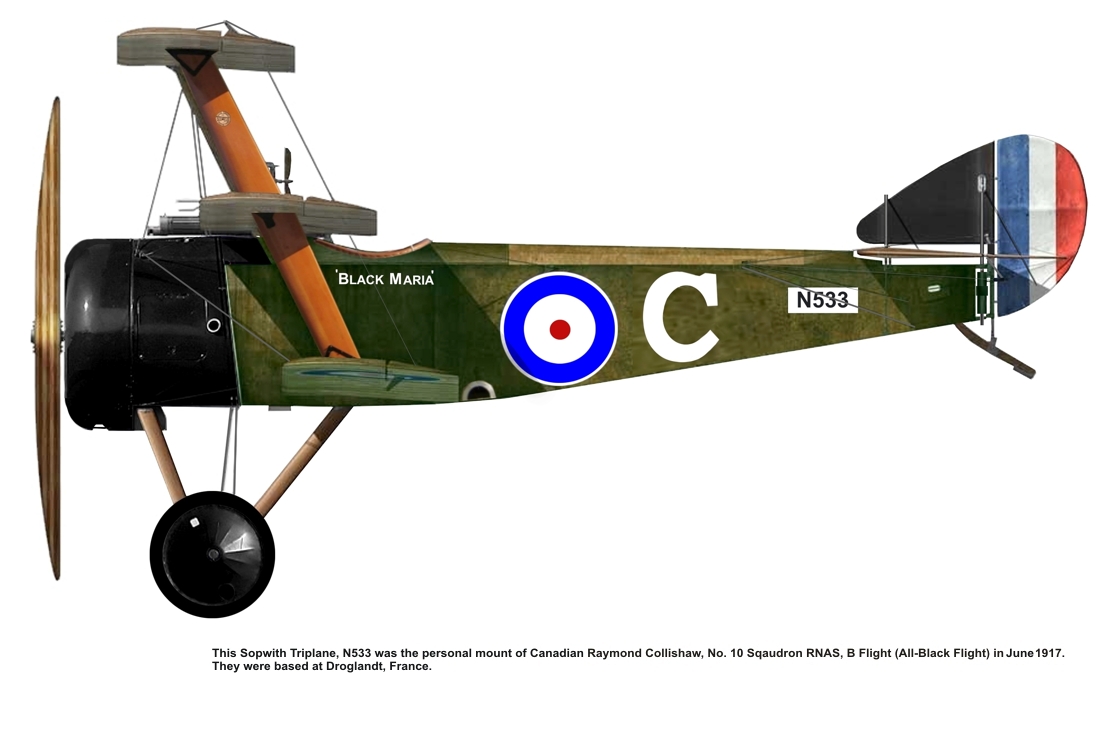
Sopwith Triplane TT.............. ..................Specifications

The Sopwith Triplane (dubbed the
"Triplehound" by her pilots) was a three wing design built upon the successes of
the Sopwith Pup series. The aircraft strayed from the normal aircraft design
techniques of the time, where monoplanes and biplanes were en vogue, and sought
to combine elements of other aircraft types into one viable platform. The result
was the devastatingly effective triplane design produced by Sopwith.
The
Sopwith Triplane, with it's three-wing system, offered up unparalleled
maneuverability and an outstanding rate-of-climb. The powerful Clerget rotary
piston engine generated 130 horsepower, putting it ahead of the Sopwith Pup
design in that respect. By all accounts, the newer Triplane could achieve
positional superiority against anything that could be thrown at it.
First
prototypes were developed as early as 1916 and rushed immediately to the
frontlines of France. Initial results were outstanding enough to warrant full
production status for the well-performing aircraft. Armament consisted of a
single or dual 7.7mm machine gun setup of the Lewis brand firing through a
synchronized two-bladed propeller system. The pilot sat just behind the large
three-wing assembly in a box-type fuselage. Visibility, in part due to the wing
structure, was not ideal at some angles though the aircraft made up for this
deficiency in other more potent ways.
Performance for the three-wing
aircraft was exceptional, particularly in achieving altitude in a short amount
of time. The design allowed for maximum lift that became highly advantageous in
dogfighting and soon earned the Sopwith Triplane a solid reputation on both
sides, so much so in fact, that the Germans offered up a reward to any aircraft
maker that could equal the design. Anthony Fokker would end up taking the call
with the development of the Fokker Dr.I Triplane series (detailed elsewhere on
this site).
For a period in 1917 measured in only months, Sopwith
Triplanes would rack up over 100 enemy kills. This type of success garnered the
Sopwith Triplane legendary status and thus was a highly-feared adversary to
German pilots. The Sopwith Triplane, though limited in production to just 140
units, would nevertheless own the skies over France for a good deal of time.
For a variety of reasons, the Triplane's combat career was comparatively brief. In service, the Triplane proved difficult to repair. The fuel and oil tanks were inaccessible without substantial disassembly of the wings and fuselage. Even relatively minor repairs had to be made at rear echelon repair depots. Spare parts became difficult to obtain during the summer of 1917, and No. 1 Naval Squadron's complement was reduced from 18 to 15 aircraft.
The Triplane also gained a reputation for structural weakness. The wings sometimes collapsed in steep dives. This defect was attributed to the use of light gauge bracing wires in the 46 aircraft built by subcontractor Clayton & Shuttleworth. Several pilots of No. 10 Naval Squadron used cables or additional wires to strengthen their Triplanes. In 1918, the RAF issued a technical order for the installation of a spanwise compression strut between the inboard cabane struts of surviving Triplanes. One aircraft, serial N5912, was fitted with additional mid-bay flying wires on the upper wing while used as a trainer.
Another drawback of the Triplane was its light armament. While contemporary Albatros scouts were armed with two guns, most Triplanes were armed with a single synchronized Vickers machine gun. Efforts to fit twin guns to the Triplane met with mixed results. Clayton & Shuttleworth built six experimental Triplanes with twin guns. Some of these aircraft saw combat service with Nos. 1 and 10 Naval Squadrons in July 1917, but performance was reduced and the single gun remained standard. Triplanes built by Oakley would have featured twin guns, but only three were completed.
In June 1917, No. 4 Naval Squadron received the first Sopwith Camels and the advantages of the sturdier, better-armed fighter quickly became evident.
